Champions of Change Blog
A Startup Called Government
Posted by on October 15, 2012 at 9:58 AM EDT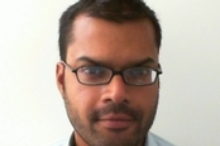 Jay Nath is being honored as a Champion of Change for his efforts in local innovation.
Jay Nath is being honored as a Champion of Change for his efforts in local innovation.
I have the distinct pleasure of serving as Chief Innovation Officer for San Francisco Mayor Edwin M. Lee—a leader who exhibits the unique combination of foresight and creativity and to whom I owe the honor of being named a Champion of Change: Local Innovator by the White House. Upon establishing one of the Nation’s first Chief Innovation Officer positions, Mayor Lee took an important step forward. He recognized the power and potential of innovation to solve social and civic challenges and to make government a more open, responsive, and efficient enterprise.
As CIO, I direct the Mayor’s Office of Civic Innovation, and am tasked with tackling some of the most historically persistent and intractable problems faced by the City of San Francisco. At the Mayor’s office, we are fully aware that these massive challenges can only be addressed with participation of our citizens and help from our partners across the public, private and nonprofit sectors. That’s why we focus on creating a culture of sharing, collaboration, and co-creation and work closely with partners to change the way government serves its constituents.
Harnessing lessons learned from my time in the private sector, I take an agile approach to public administration—one that involves working to disrupt the status quo and transform government for the 21st Century. I focus on creating as much value as possible, in the shortest amount of time, with little or no capital cost. I work to connect government with the incredible network of change-agents, hackers, students, entrepreneurs, and countless other individuals who make San Francisco the Innovation Capital of the World. I constantly seek new opportunities to engage the community and new technologies that can harness the problem-solving prowess and entrepreneurial ethos of our City. Here are just a few examples:
Open Data
In 2009, inspired by the White House’s Data.gov initiative, I piloted an Open Data policy here in San Francisco—making us one of the first cities in the Nation to make all non-confidential government datasets publicly available. Largely because we used open source technologies, we were able to take this concept from idea to deployment in just three months. Since its launch, DataSF.org has attracted a vibrant community of developers who have created over 100 applications in categories such as public safety, transportation, data visualization, and environmental protection. Open Data helps to illuminate the landscape for local decision-makers and provides a standard by which information can be shared.ImproveSF
In April 2012, we launched ImproveSF.com, a crowd-sourcing platform that empowers San Franciscans to generate and implement their own solutions to citywide problems. Over 3,000 interactions have taken place thus far and the platform has been used to address local issues such as Transit Efficiency, Food Justice and Neighborhood Revitalization. The latest ImproveSF challenge called for ideas to improve access to healthy food for residents in the blighted Central Market neighborhood. Over 100 ideas were submitted and more than 500 comments made. Through this platform, we’ve seen first-hand the impact of opening civic challenges to a community of local problem solvers.From hackathon-to-market
More recently we’ve taken the community-problem solving approach one step further by holding hackathons that bring designers and developers together to create apps that solve specific civic challenges. We then work to move the apps from hackathon-to-market by partnering with government agencies to pilot demonstration projects. The San Francisco Municipal Transit Agency is currently piloting an app that allows operators to gather real-time data and improve operations.Hackathons can help government solve a variety of operational challenges, while also planting seeds for new start-ups that strengthen our local economy by creating jobs. The City continues to work towards ensuring that ideas born at hackathons have the necessary assets and networks to scale-up to their full potential.
Innovation Month in San Francisco
With so much happening in our office and throughout our City, we are taking the month of October to highlight the impact that innovation has had on our public and private sectors. Mayor Ed Lee has declared October as Innovation Month in San Francisco to celebrate the individuals and institutions that are creating game-changing solutions to the wide variety of challenges we face.With the leadership of a supportive Mayor and by collaborating with partners such as Code for America, SF.CITI, and many others, we have seen the power of innovation to open the doors of government to citizens, to manage customer service, to improve efficiency, and to ultimately drive better public services. Many of the activities described have been conducted at little or no cost, yet have generated tremendous value—quantitatively and qualitatively— for the public good.
Finally, we have learned first-hand that people are willing to work collaboratively with their government to address long-standing societal challenges. We will continue to engage with the creative and entrepreneurial people of our City to make our government better, smarter, and more efficient.
Jay Nath is Chief Innovation Officer for the City of San Francisco.
Learn more aboutBridging FFA Chapters
Posted by on October 11, 2012 at 5:41 PM EDT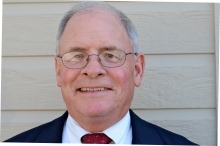 Bill Jimmerson is being honored as a Champion of Change for his efforts in 4-H and Future Farmers of America.
Bill Jimmerson is being honored as a Champion of Change for his efforts in 4-H and Future Farmers of America.
I have always enjoyed working hard and being passionate about the things I care about. It is hard for me to believe that a shy country boy who grew up on a family farm in central Montana is heading to Washington, D.C. to receive an award as a Champion of Change! After all, I attended a one-room elementary school and did not even have a classmate until I went to high school. The most important decision my family made at that time was to send me to the high school which had a respected National FFA Organization. That single decision set me on my way to the career that has brought me to the White House.
After deciding as a junior in high school to follow in the footsteps of my FFA advisor, Mr. Jim Schultz, I was on my way. Mr. Schultz always emphasized that community service is “the rent you pay for living on this planet” which I have incorporated into every aspect of my life. My high school FFA members were always involved in some sort of activity to improve the community. From building bleachers, benches, a gazebo for an elementary school, and a shelter at the local golf club my students were learning the importance of providing a helping hand to make their community a better place to live.
The National FFA started a program called Project PALS (Partners in Active Learning Support) many years ago and I encouraged my local FFA chapter to get involved in this, which they did. High school FFA members are paired with designated elementary students to help those youngsters with their self-esteem and help them learn. This program continues today and is the most honorable community service program in which I involved my students.
On my very first trip with my new State FFA officers in 2005, we stopped at an elementary school on the Fort Peck Indian Reservation to ask for directions to the high school. The principal, a Native American dressed in a suit and tie, was out front so I pulled up beside him and told my young FFA state officer to ask him directions to the high school. He was reluctant to do so. That got me thinking. With 5 FFA chapters located on Indian reservations in Montana, why not start a program to get Native American FFA members more involved so all FFA members can respect each other more and eliminate the bias that exists? Therefore, the FFA/American Indian program exists in Montana. I designed it so any chapter can put together a program about their culture and customs, bring it to the state FFA convention, and be judged with the winner getting the opportunity to take their program to the National FFA Convention. A year ago the National FFA honored Native American culture at their convention and allowed me to help with the planning of that event. Through my Montana program, I was very honored to get to know a former member of the Browning FFA chapter and the current Chief of the Blackfeet Nation, Earl Old Person, who honored me with my own Indian name, “Morning Eagle.” I arranged for him to attend the National Convention and speak on behalf of all Native American FFA members. I am proud that this program has helped a few more young people find a positive avenue for their life.
As an honoree of the Champion of Change, I can personally attest that this is one of my highest honors ever, and I encourage others to always be passionate about their community values and understand that this is what makes America the greatest country on the planet!
Bill Jimmerson is a retired educator who served for 32 years as an Agricultural Education teacher and FFA Advisor in Montana.
Learn more aboutCommunity Leaders for a Lifetime
Posted by on October 10, 2012 at 5:38 PM EDT Dr. Pete Dreisbach is being honored as a Champion of Change for his efforts in 4-H and Future Farmers of America.
Dr. Pete Dreisbach is being honored as a Champion of Change for his efforts in 4-H and Future Farmers of America.
I was born in Yadakunya, Nigeria to parents who were U.S. citizens and served abroad for approximately sixty years. Dad was a physician and Mom was a nurse and both worked hard to serve the very poor. This upbringing strongly influenced my world view and I cannot remember a time in my life when I was not intensely interested in agriculture and equally interested in youth and their development. Upon coming to the United States of America for post secondary education, I was introduced to FFA which precisely combined my interests both in youth development and in agriculture. What could possibly be more important than youth development and the provision of food, fiber, and shelter? In Georgia I taught agriculture at the Junior High and high school levels and served as Advisor to a local FFA Chapter and worked with the local Young Farmers of America Chapter (YFA) as well. After earning my terminal degree, I worked on the Department of Agriculture faculty at Western Kentucky University. For the past 27 years I have served as Program Consultant-Agriculture for the Kentucky Department of Education as well serving as the Director of the Kentucky FFA Leadership Training Center. Additionally, I work with Kentucky FFA at the regional and State levels, coordinate Kentucky FFA Alumni, work with Kentucky’s new and returning teachers of agriculture and with the Kentucky YFA on the regional and state levels as well. I have also served for many years in Ecuador as a volunteer with Farmer-To-Farmer/Kentucky Partners of the Americas in youth development. Youth leadership development is a particular focus and passion so I am indeed honored that after over thirty years working in this arena to be included as a White House Champion of Change.
The Kentucky FFA Leadership Training Center (LTC) began in 1937 on property procured from the Civilian Conservation Corps (CCC) by the Kentucky Vocational Agriculture Teachers' Association (KVATA now KAAE) for use as a facility for “providing training in leadership and citizen development for youth” (705 KAR 4:080).
The LTC is celebrating its 75th anniversary, for which I have been Director for a third of this period, made possible by the visionary and sacrificial efforts of early Kentucky Agricultural Educators who Kentuckian author, Jesse Stuart, called “Smith-Hughes” Teachers! Today the LTC provides leadership development opportunities for almost 3,000 young people every summer from every county in the Commonwealth.
The facilities of the LTC have been greatly improved and expanded during my tenure and are excellent but what are most important are NOT the facilities but rather the educational focus on leadership development. I achieve immense satisfaction in my efforts in strengthening the LTC curricula. Every activity, whether being a catalyst for community service or instruction on effectively serving on a committee or preparing a speech or enhancing parliamentary skills or improving effective public communications or enhancing group dynamics through the Ropes/Challenge Course or even a recreational activity, the focus is on leadership development in order that these young people go back to their home communities and serve a leaders both now and as they mature into adults.
Dr. Pete Dreisbach is the Director of the Kentucky FFA Leadership Training Center.
Learn more aboutEvery Opportunity
Posted by on October 10, 2012 at 5:13 PM EDT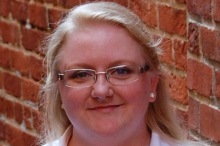 Andrea Kneer-Rice is being honored as a Champion of Change for her efforts in 4-H and Future Farmers of America.
Andrea Kneer-Rice is being honored as a Champion of Change for her efforts in 4-H and Future Farmers of America.
“I feel like I’ve graduated from 4-H today!” I shared this feeling with a mentor while I was helping with a neighboring county’s 4-H horse show this spring. Just five years ago I would have been getting my own horse ready for my county fair as a 4-H/FFA member. Now, as a Baltimore City 4-H educator, I have the opportunity to empower Maryland 4-Hers and guide them to a successful future. I know that I would not be able to have the opportunity to be recognized as a White House Champion of Change without the opportunities afforded to me as a 4-H member, which have lead me to my career as a 4-H educator.
I believe that in 4-H, and in life, we must take advantage of every opportunity we come across. A new experience can lead into a never before seen talent for our youth, and inspire them to continue discovering themselves. The Baltimore City 4-H Youth Expo was my first opportunity to witness the impact a 4-H educator can have on an entire school of children. The students created projects while at home and school to be exhibited at the Expo. The projects were judged and prizes were awarded. The students felt such a sense of accomplishment and were grateful for the recognition they received. Many were excited to become more involved in 4-H and permanently join a club.
During my first week as a 4-H educator I was asked what programs would be of interest to me to implement in Baltimore City. Considering that my position specifically involves STEM I suggested aquaponics. I worked with community members from Johns Hopkins and Maryland Sea Grant, to submit a proposal for a grant to fund clubs that would be researching and building sustainable aquaponics systems, and selling the yield through a local farmer’s market to build a financial foundation for the future. This was the first grant I had ever been involved with, let alone served as the lead investigator for. The greatest thing about extension is that we truly are a family. I was able to call upon former mentors and newly acquainted colleagues for guidance, and with their help,” Aquaponically Grown 4-H Clubs” was in the works. I did receive the grant, and we are beginning to conduct trainings with the teachers at the pilot schools.
My next challenge is establishing technology clubs, and teaching students to write smartphone applications that will enrich the lives of the people in their communities. I want them to address a problem within their community and develop an application that will help manage or resolve the problem. Eventually, they could develop apps with a greater scope that reach communities throughout Maryland and beyond.
I am also very fortunate to be married to a high school agriculture science teacher who has let me help him establish the Southern High FFA Chapter. I help coach the FFA horse judging team, lend a hand with chapter officer development, and sell Christmas trees alongside of the students. I thoroughly enjoy seeing high school students get excited about wearing their first blue corduroy FFA jacket to a public event, and feeling a sense of pride when they share their knowledge of agriculture with fellow community members.
It seems like I spent my childhood running to 4-H and FFA events every evening, and not much has changed now that I am an adult. Part of feeling like I officially graduated from 4-H, and I guess FFA too, is that I am the mentor now. I have built relationships with students and 4-H members by offering them the opportunities that will shape the adult they will become. My advice to all of them has been that when opportunity knocks, eagerly swing the door wide open.
Andrea Kneer-Rice is a 4-H educator at the University of Maryland Extension, with a focus in STEM education.
Learn more aboutYouth Development through Self Learning
Posted by on October 10, 2012 at 4:45 PM EDT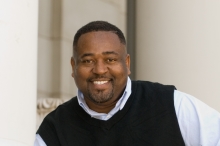 Dr. Samuel Roberson is being honored as a Champion of Change for his efforts in 4-H and Future Farmers of America.
Dr. Samuel Roberson is being honored as a Champion of Change for his efforts in 4-H and Future Farmers of America.
I am thrilled to have been selected as a White House Champion of Change. I can still recall, as a young kid, wanting an answer to how I could change my circumstances. I was frustrated by the speakers that were placed in front of me that constantly said “don’t become like me.” I was living in poverty, and being told I was gifted and had potential, yet I rejected being smart. I rejected the idea because I didn’t think I fit the image of what smart was, “not cool!” My counselor in middle school at the time, Ms. Artson, took time to listen to my arguments, maybe my hurt and defense mechanisms. However she continued to speak to my potential and encouraged me to give the challenge of pursuing my full academic potential a try. So I became class president in middle school and went on to attend Lowell High School in San Francisco where I continuously was challenged academically, yet given a solid foundation for a commitment to lifelong learning.
There, at Lowell HS, Ms. Brash picked up where Ms. Artson left off and supported me as I became a first generation college graduate. She selected a role model for me by showing me photos of a former Lowell graduate whom was an African American on his way to becoming Dr. Kelly. He had been a football player like me and she said I reminded her of him. She was planting seeds of aspiration of what I could become. Because if I was like him, then anything that he achieved I could achieve.
In May 2012, 33 years later, I achieved my Ph.D. at Texas A&M University from the Department of Recreation, Park and Tourism Sciences where I studied youth development. Prior to graduate school, I spent over 20 years actively volunteering in my community across the states of California, Utah, and Colorado while simultaneously working full time. A stimulus for my involvement had been a desire to give back and help others who are often misunderstood, as I had been as a child. Nevertheless there was always someone that saw more in me then I could or was willing to believe.
As I engaged in volunteer coaching, I worked hard to mentor young boys and girls about life thru sport. Along the way, the oldest of my three children, and only son, was diagnosed with leukemia cancer at ages 8 and 11. In the midst of dealing with my son’s illness, I witnessed the genuine goodness of people that came to my family’s aide. I personally was overwhelmed by these selfless acts of goodwill. My son continues to enjoy the gift of life and remission 18 years later and gives back through his Make Me a Match Project dedicated to saving the lives of patients like him. Consequently, I responded with a higher commitment to my community which led to my serving as a Community Services Commissioner in Fairfield, CA for 8 years.
As a result of my community work, I decided to make a career change and pursue my passion for making a difference in the life of others with a focus on youth development. I discovered 4-H during my studies and have been fascinated with the positive youth development opportunities presented to help young people learn leadership, life skills, healthy living, citizenship, and STEM career nurturing. The emphasis by 4-H programs on hands-on learning is directly correlated to the creative mischief that I experimented with in open fields as child. 4-H programs are designed to meet youth where they are to participate in self learning.
I am excited to be a part of Prairie View A&M University statewide 4-H program where I now provide supportive research, programming and evaluation services to help our Cooperative Extension 4-H programs succeed at impacting Texas youth with a primary emphasis on youth from limited resources backgrounds and minorities. I am blessed to be positioned to help stimulate the gift of learning and positive youth development thru scientific learning and life skills development among youth that are like me.
I accept this honor on behalf of youth, families, and communities that have allowed me to be a part of a community difference; and my family (Traci, Sam Jr., Latoya, Jazzlyn and Tacir) that has supported my participation in opportunities to make a difference in the lives of others outside of our home.
Dr. Samuel G. Roberson Sr. is currently a Program Specialist, 4-H & Youth Development Prairie View A&M University Cooperative Extension Program in Texas.
Learn more aboutMake the Best Better
Posted by on October 10, 2012 at 4:27 PM EDT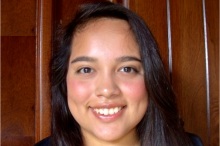 Chamonix Mejia is being honored as a Champion of Change for her efforts in 4-H and Future Farmers of America.
Chamonix Mejia is being honored as a Champion of Change for her efforts in 4-H and Future Farmers of America.
For as long as I can remember, I’ve been involved with 4-H. It has been an amazing 11 year journey, and I have not only grown as a person, but I’ve been able to help out my community as well.
When I first started in 4-H, my projects focused on livestock. As I grew older, I saw the many opportunities that 4-H offers its members. My county has many 4-H members, but few are active on the district and state level. My goal is to encourage 4-H members to realize the vast array of chances that can improve their lives. My goal is to help others so they can help themselves. By being in 4-H, and being the first to make a change in my county program, I believe that we truly can follow 4-H’s motto, “To Make the Best Better.”
I have shown others what 4-H has to offer by holding several state level positions, including participating on the Texas 4-H Technology Team and being a Texas 4-H Shooting Sports Ambassador. I have also attended many state level competitions and activities such as Texas 4-H Roundup, Texas 4-H Congress, the State Games and the National 4-H Conference. By attending these events, I’ve been able to show others just how fun and valuable 4-H can be. I’ve been able to create a spark in 4-H’ers minds that has led to much more participation on the district and state level and makes them want to make a difference. That spark has led to others finding their own voice and set them on a path to better life for themselves by enhancing their life skills.
One of the main goals of 4-H is to create a better world for those around us. My club participates in several community service projects including Christmas caroling at the local nursing home, supporting veterans, writing letters to active duty soldiers, and more. One of the ways that 4-H is improving our communities is by holding One Day 4-H. One Day 4-H is the one day that all of Texas 4-H can give back to the communities that have provided so much for us. This year, we are helping out with the local animal shelter.
Being named a White House Champion of Change has inspired me to continue working as hard for the future of my community. Not only has it inspired me, but I know it has inspired others around me to do the same.
Chamonix Mejia has been an active 4-H member for the past 11 years.
Learn more about
- &lsaquo previous
- …
- 81
- 82
- 83
- 84
- 85
- 86
- 87
- 88
- 89
- …
- next &rsaquo
White House Blogs
- The White House Blog
- Middle Class Task Force
- Council of Economic Advisers
- Council on Environmental Quality
- Council on Women and Girls
- Office of Intergovernmental Affairs
- Office of Management and Budget
- Office of Public Engagement
- Office of Science & Tech Policy
- Office of Urban Affairs
- Open Government
- Faith and Neighborhood Partnerships
- Social Innovation and Civic Participation
- US Trade Representative
- Office National Drug Control Policy
categories
- AIDS Policy
- Alaska
- Blueprint for an America Built to Last
- Budget
- Civil Rights
- Defense
- Disabilities
- Economy
- Education
- Energy and Environment
- Equal Pay
- Ethics
- Faith Based
- Fiscal Responsibility
- Foreign Policy
- Grab Bag
- Health Care
- Homeland Security
- Immigration
- Innovation Fellows
- Inside the White House
- Middle Class Security
- Open Government
- Poverty
- Rural
- Seniors and Social Security
- Service
- Social Innovation
- State of the Union
- Taxes
- Technology
- Urban Policy
- Veterans
- Violence Prevention
- White House Internships
- Women
- Working Families
- Additional Issues

